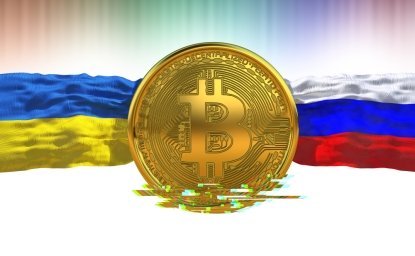On March 9, 2022, President Biden signed an Executive Order (EO) with regard to the regulation of digital assets. The EO describes the remarkable growth in digital assets from a market capitalization of $14 billion in early November 2016 to $3 trillion today.
The EO demonstrates a recognition by the Administration of the potential impact of blockchain technology, a desire to encourage its implementation, and a powerful support for an evolution that will be nothing short of globally game changing. Because digital assets are relatively new and rapidly evolving, there is a large degree of legal uncertainty surrounding their use cases.
Recognizing “[a]dvances in digital and distributed ledger technology,” the President set mission objectives for the EO to find the path to a regulatory scheme that will:
- Protect consumers, investors, and businesses, including data privacy and security.
- Enhance financial stability while preventing systemic risk.
- Address crime, national security and monetary policy issues related to digital assets.
The EO also highlights the need to review issues surrounding human rights, financial inclusion and equity, and requires government to look at energy demand and the climate impact resulting from further growth in the use of this new technology.
The EO defines “digital assets” as all Central Bank Digital Currencies (CBDC), as well as other “representations of value, financial assets and instruments, or claims that are used to make payments or investments, or to transmit or exchange funds or the equivalent thereof, that are issued or represented in digital form through the use of distributed ledger technology.” Distributed ledger, or “blockchain technology,” is a system where data is shared across a network that creates a record of verified transactions or information among network participants.
The EO’s broad definition of digital assets encompasses a wide range of existing and yet undiscovered use cases for blockchain technology. Bitcoin (and other cryptocurrencies), supply chain tracking, non-fungible tokens (NFTs), payment systems, data security, blockchain based identification, title transference, metaverse land ownership, games, and Web3 applications can all find a home within the EO’s definition. The Administration’s recognition of the broad reach of this technology shows an appreciation that digital assets may be a game changer profoundly impacting our global ecosystem. It is not just about Bitcoin anymore. We may be on the verge of a Web3 decentralization where game-changing innovation in financial and social interactions impact every world citizen.
During the past several years, individual American regulators have asserted jurisdictional authority, or shunned same, over aspects of this monumental manifestation of technological achievement; the EO seeks to provide a more holistic, defined, and robust approach to regulation and its construct. The EO recognizes the technology as something that must be viewed in the context of understanding its role in everything affecting our lives—from sovereign currency to pictures of “Bored Apes” (a famous NFT)—everything may be impacted by the evolution of digital assets. Underpinning the EO is a recognition that digital assets and their regulation will affect everything from sanctions to social strategy.
The EO, then, requires numerous government agencies to provide analysis to the President as to a regulatory scheme that would be comprehensive and involve multiple points of oversight. Overseen by the President’s Advisors on Economic and National security, the EO requires a review of where regulation might be implemented, by rule making or by new legislation across government.
So widespread is the impact of this new technology that the interagency process for coordinating regulation includes almost every agency of government including the Secretary of State, the Secretary of the Treasury, the Secretary of Defense, the Attorney General, the Secretary of Commerce, the Secretary of Labor, the Secretary of Energy, the Secretary of Homeland Security, the Administrator of the Environmental Protection Agency, the Director of the Office of Management and Budget, the Director of National Intelligence, the Director of the Domestic Policy Council, the Chair of the Council of Economic Advisers, the Director of the Office of Science and Technology Policy, the Administrator of the Office of Information and Regulatory Affairs, the Director of the National Science Foundation, and the Administrator of the United States Agency for International Development.
The key goal of the EO, and the mandate to the agencies reviewing its potential regulatory construct is to enhance the responsible use of this technology by:
- Protecting consumers, investors, and businesses in the United States.
- Protecting United States and global financial stability and mitigate systemic risk.
- Mitigating the illicit finance and national security risks posed by misuse of digital assets
- Reinforcing United States leadership in the global financial system and in technological and economic competitiveness, including through the responsible development of payment innovations and digital assets.
- Promoting access to safe and affordable financial services.
- Supporting technological advances that promote development and use of digital assets.
These objectives encompass important considerations that will impact social equality, monetary policy, privacy, environmental utility, security and market viability—among many other aspects of everyday life. While the next 180 days (and beyond) will certainly be a period of uncertainty as the market and innovators prepare for the results of interagency analysis, it is clear that this Administration recognizes that blockchain technology is here to stay, and that it has the potential to impact every aspect of human life.
Throughout the EO, the President calls for global partnership in implementing responsible development of digital assets. Call it Web3 or the next evolution of humanity, the EO demonstrates a recognition of a future filled with the metaverse, distributed data management, and money mobility that was not possible without this new technology. The game has changed—over the next year we will begin to understand the new rules of engagement.
Author

Private Investor; Senior Lecturer of Laws, New York University

Science and Technology Innovation Program
The Science and Technology Innovation Program (STIP) serves as the bridge between technologists, policymakers, industry, and global stakeholders. Read more

Explore More
Browse Insights & Analysis
Digital Assets Forum

Cryptocurrency as the New Frontline in the Russian Invasion of Ukraine

Bringing Clarity to Cryptocurrency

